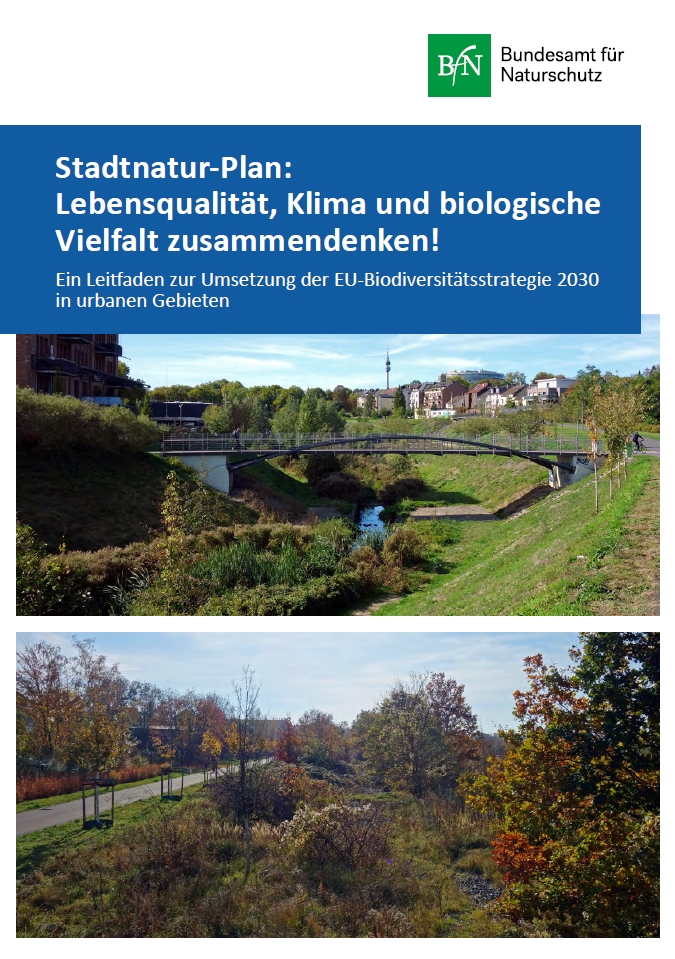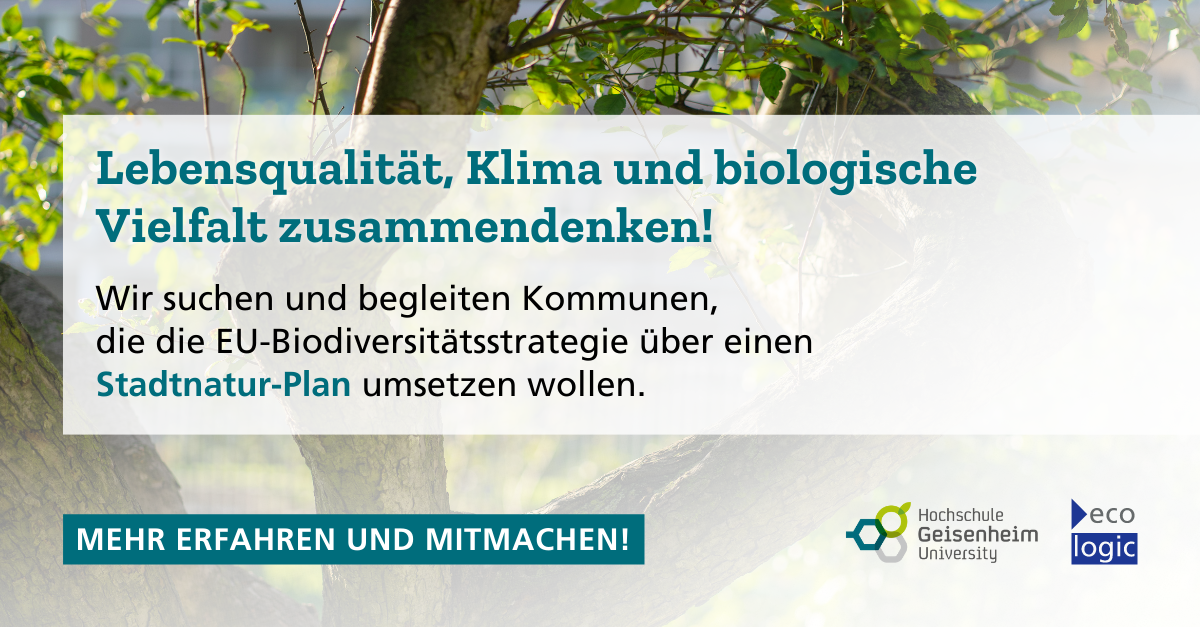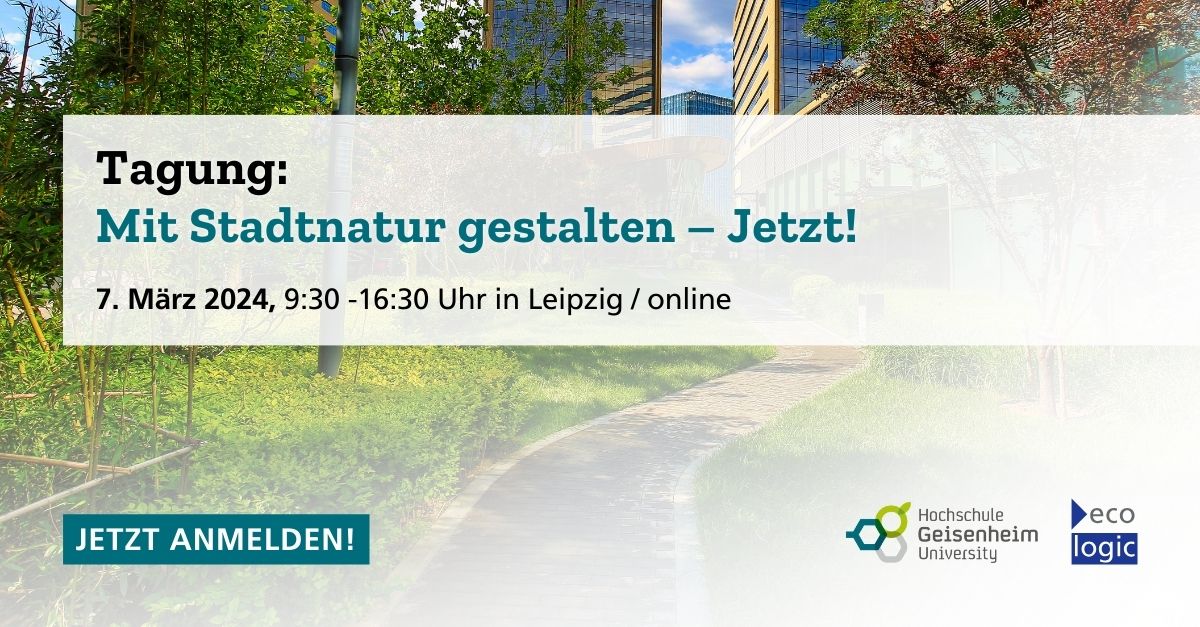Stadtnatur-Plan: Lebensqualität, Klima und biologische Vielfalt zusammendenken!
Ein Leitfaden zur Umsetzung der EU-Biodiversitätsstrategie 2030 in urbanen Gebieten
- Publication
- Citation
Bundesamt für Naturschutz (Hrsg.) (2024): Stadtnatur-Plan: Lebensqualität, Klima und biologische Vielfalt zusammendenken! Leitfaden zur Umsetzung der EU-Biodiversitätsstrategie 2030 in urbanen Gebieten. Bonn.
The EU Biodiversity Strategy 2030 calls on cities to promote urban nature in the form of “Urban Nature Plans” for the protection of biodiversity, for climate protection and adaptation and for the quality of life in cities, and to set ambitious targets for this. This brochure transfers the approach of urban nature plans to the German context and offers concrete tips for implementation. This includes a checklist to determine the extent to which a municipality's existing plans already correspond to urban nature plans.
Methodological approaches to implementation
A central component of the brochure is the methodological guidance for the development and implementation of urban nature plans. It emphasizes the process of co-creation, in which various actors from administration, politics and civil society work together on the design and implementation of the plans. This not only promotes acceptance of the measures, but also ensures that diverse perspectives and local knowledge are incorporated. This approach is complemented by detailed communication strategies that ensure that all relevant stakeholders are informed and involved in the process.
Monitoring and evaluation
The brochure also focuses on the continuous monitoring and evaluation of urban nature plans. To this end, monitoring and evaluation tools are presented that enable local authorities to track the progress of their measures and make adjustments where necessary. This ensures that the goals set are not only achieved, but also anchored in the long term. Regular evaluations can also make successes visible and document the added value of urban nature plans, which in turn strengthens political and public support.
This publication was prepared as part of the research project "Taking biodiversity into account in urban development funding (BioViBeS) - Recommendations for local authorities on taking biodiversity into account in urban development funding areas". The BioViBeS project was funded by the Federal Agency for Nature Conservation with funds from the Federal Ministry for the Environment, Nature Conservation, Nuclear Safety and Consumer Protection (BMUV) and was carried out jointly by Ecologic Institute and Hochschule Geisenheim University.
An English language version of the publication is being finalized and will also be published soon.








